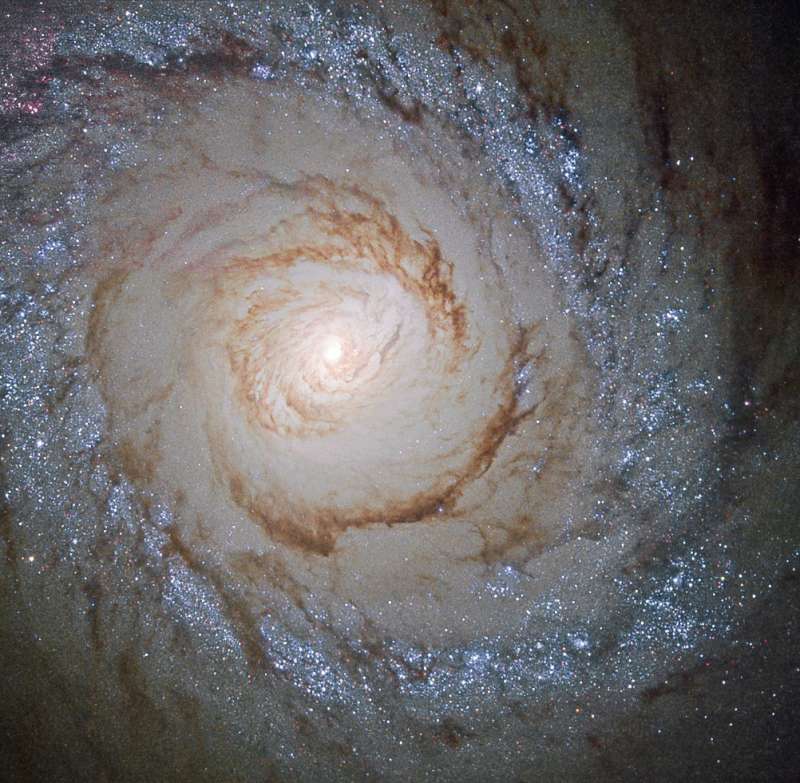Credit & Copyright: ESA/Hubble and
NASA
Explanation:
Beautiful island universe
Messier 94 lies
a mere 15 million light-years
distant in the northern constellation of the hunting dogs,
Canes
Venatici.
A popular target for earth-based astronomers,
the face-on spiral galaxy is about 30,000 light-years across,
with spiral arms sweeping through the
outskirts of its broad disk.
But this Hubble
Space Telescope field of view spans about
7,000 light-years or so across M94's central region.
The sharp close-up examines the galaxy's compact,
bright nucleus and prominent inner dust lanes,
surrounded by a remarkable bluish ring of young,
massive stars.
The massive stars in the ring are all likely less than 10 million
years old, indicating the galaxy experienced a well-defined
era of rapid star formation.
As a result, while the small, bright nucleus is typical of the
Seyfert
class of active galaxies, M94 is also known as a
starburst galaxy.
Because M94 is relatively nearby, astronomers can explore
in detail
reasons for the galaxy's burst of star formation.
1999 2000 2001 2002 2003 2004 2005 2006 2007 2008 2009 2010 2011 2012 2013 2014 2015 2016 2017 2018 2019 2020 2021 2022 2023 2024 2025 |
Yanvar' Fevral' Mart Aprel' Mai Iyun' Iyul' Avgust Sentyabr' Oktyabr' Noyabr' Dekabr' |
NASA Web Site Statements, Warnings, and Disclaimers
NASA Official: Jay Norris. Specific rights apply.
A service of: LHEA at NASA / GSFC
& Michigan Tech. U.
|
Publikacii s klyuchevymi slovami:
M 94 - starburst galaxy - Seyfert galaxy - Seifertovskaya galaktika - vspyshka zvezdoobrazovaniya
Publikacii so slovami: M 94 - starburst galaxy - Seyfert galaxy - Seifertovskaya galaktika - vspyshka zvezdoobrazovaniya | |
Sm. takzhe:
Vse publikacii na tu zhe temu >> | |
